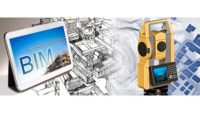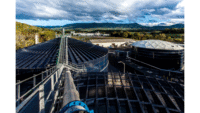The construction industry is always evolving, whether it be the technology we use to design and model the buildings and systems we install or even the way we execute the work. The mechanical and electrical system installations today are often more complex, and the more you can plan and prepare for your project installations, the likelihood of success is exponential.
Over the years, we’ve built HVAC, plumbing and electrical systems piece by piece in the field — those times are, for the most part, gone or leaving us rapidly. I’m part of a large construction team that builds in multiple markets — hospitality, multifamily, commercial, mission-critical, advanced industries, health care, aviation, industrial and manufacturing, higher education, student housing and more. The teams I work with who deliver at the highest level embrace prefabrication, where off-site construction is produced in safer and more productive shop environments, and their success is profound.
There is tremendous pressure on our engineering and contracting community to deliver projects within budget, quickly buy out our jobs to avoid material and equipment escalation and meet specific schedule requirements. All of this with one looming and ever-present conundrum — not having enough staff or resources to build projects.
I’ve gotten to know contractor teams across the country and there’s a common theme: There is a growing number of construction projects to build than there are people to build them. Many states are adding construction jobs but, at the same time, many states are losing jobs in our industry. With low unemployment and strong demand, it’s a real challenge in finding good, qualified and experienced workers. However, we collectively agree that prefabrication on a larger scale is part of the solution.
Labor savings through prefabrication
Prefabrication is not new, although some contractor teams still don’t deploy it, don’t understand it or don’t realize the true benefits and need. That’s where I’d like to shed some more light on the topic and describe the movement I’m seeing in our industry.
Sure, we’ve been building toilet batteries in our shops for decades, but that’s standard prefab — it’s a given and should continue without question. In our shops, we teach our newer and younger tradespeople how to work safely, solder, braze, fit and weld piping in addition to duct construction, insulation and wiring. When we assemble and build batteries, assemblies and spools in our shop, these systems can (and will) cost less than if they were built in the field due to the fact that we get more productive hours in a shift with oftentimes the benefit of better labor rates. The compound effect here results in less time in the field on ladders and lifts (labor savings) which then further increases job site safety (the number one priority for all contracting professionals!). Time spent building MEP system components in our shops subsequently reduces the manpower strain often felt on our projects, a tough situation for anyone dealing with that issue. We call this “shrinking the job.”
In my experience, most general contractors and owners are fully aware of the construction challenges we face while helping deliver projects. They are willing and open to paying for prefabricated systems prior to materials and equipment hitting job sites just like stored materials — just make sure you’re having this conversation with your customers and get these payment terms included in your executed contract.
So what are we building in our shops that provide the greatest benefits in the field and for our projects? Here are some common system components we are building off-site:
- Wet walls and plumbing batteries;
- In-wall shower assemblies;
- High/low pressure reducing stations (water and steam);
- Single water heater inlet and outlet piping with unions, valves, meters, vacuum breakers;
- Domestic water piping manifolds at multiple heater and storage tank lineups;
- Carbon steel fabrication including pump risers, pump headers, boiler hookups, major equipment headers;
- Multiple systems on common racks (multi-trade prefab);
- Preinsulated CHW and HHW pipe racks;
- Coil packages and coil hookups preassembled on VAV and terminal equipment;
- AHU coil connections with valves and accessories;
- Refrigerant isolation valves on VRF branch controllers ;
- Duct risers;
- Prewired electrical panels and power distribution system components; and
- In-wall electrical for lighting and receptacle circuits.
If you’re not set up to perform all the prefabrication efforts you need to help you deliver projects more efficiently, there are many larger-scale fabrication shops available to you for plumbing, mechanical and electrical system components. We work with regional shops that ship prefabricated assemblies to customers as well as their own project teams. It’s a viable option worth considering in this tight labor market and it’s always better to have materials and equipment when you need them to “feed the job” and meet the construction schedule.
In closing, it’s vitally important that the design engineer properly detail systems that will allow the opportunity for a prefabrication effort. More often than not, my engineering team is collaborating with our design team partners early to ensure system details are being included that are specific and relevant to our projects. This helps avoid RFIs down the road and provides a more constructible design for our operations and installation teams.
If you don’t have the opportunity to work with the designer and have input on what’s being shown in design, make sure to refer to the manufacturer's installation instructions on the systems you’re purchasing and installing. Too often there are specific installation requirements that are missed and vary between manufacturers that don’t show up in design details.
At the end of the day, we’re responsible for an installation that performs based on the design and the manufacturer’s published guidelines we choose to furnish and install. All projects and systems have prefabrication opportunities — it’s just a matter of taking the time up-front to find them, assigning a prefabrication champion and determining what resources you need to make your project more successful. Best of luck in all your prefabrication ventures!




